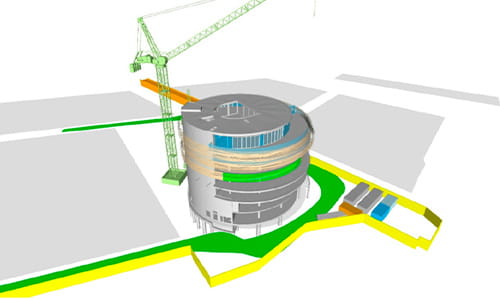Torrens University’s featured research projects showcase the latest research on social, health, infrastructure, and socio-economic issues that our researchers are collaborating with industry, government, and other universities on to make a global impact. Our researchers explore some of the greatest challenges facing our society currently, and these case studies illustrate their accomplishments, methodology and how these initiatives can be used in industry, government, and social sectors.

Addressing Australia’s housing crisis
ARC Linkage Project
Australia's housing crisis is due to a 40% increase in the average construction time. The housing industry is fragmented, and a solution is offsite manufacturing. Our research calls for a collaborative practice-based model to increase the uptake of offsite manufacturing.
Using virtual technology to test new heart devices
NHMRC Development Grant
Heart failure affects more than 530,000 adults in Australia, including a significant part of the aging population. Our research features a model that allows medical devices to be applied and tested virtually - potentially helping patients with hypertensive heart failure.
Educating women about alcohol and breast cancer risks
ARC Discovery Project
Recent statistics show that middle-aged Australian women are drinking more. This research looks at how the consumption of alcohol increases the risk of breast cancer, how women in different socio-economic groups relate to risks and how best to reach them with behaviour-changing information.
Collaborative ways to address housing crisis
ARC Discovery Project
The housing sector has long been criticised for shortcomings in affordability, efficiency, quality, social and environmental responsiveness and appropriateness of offerings. The project aims to address persistent housing sector supply problems through analysis of digital collaborative practices, leading to increased collaborative capacity for industry and government housing actors.
Computer modelling to improve safety on construction sites
NSW State Government Project
Work health and safety issues on construction sites can lead to costly mistakes, less productivity and more risks. The International Standards Organisation has drafted a new standard using computer modelling to improve safety. Torrens University led this research with the NSW Government’s Centre for Work Health and Safety and Western Sydney University.
Constructing Building Integrity
Lack of confidence and trust in the building industry and in building products is jeopardising one of Australia’s most critical industries. In the wake of expensive and life-threatening building defects, our research investigates the role of professionals in restoring trust in Australia's residential construction sector.
Constructing Building Integrity Industry Report
Read The Conversation article
Constructing Building Integrity Industry Report
Read The Conversation article

Exploring Wellbeing Factors for Aboriginal Youth
Young Aboriginal people often encounter challenges that affect their social and emotional wellbeing, which can limit their potential. There is still a limited understanding of the factors that support their success. To bridge this gap, a rapid literature review was conducted to examine these protective and risk factors influencing Indigenous youth across Canada, Australia, New Zealand, and the United States.

Public Health Information Development Unit (PHIDU)
Torrens University Australia also hosts the Public Health Information Development Unit (PHIDU), which is committed to providing information on a broad range of health and other determinants across the lifespan.

